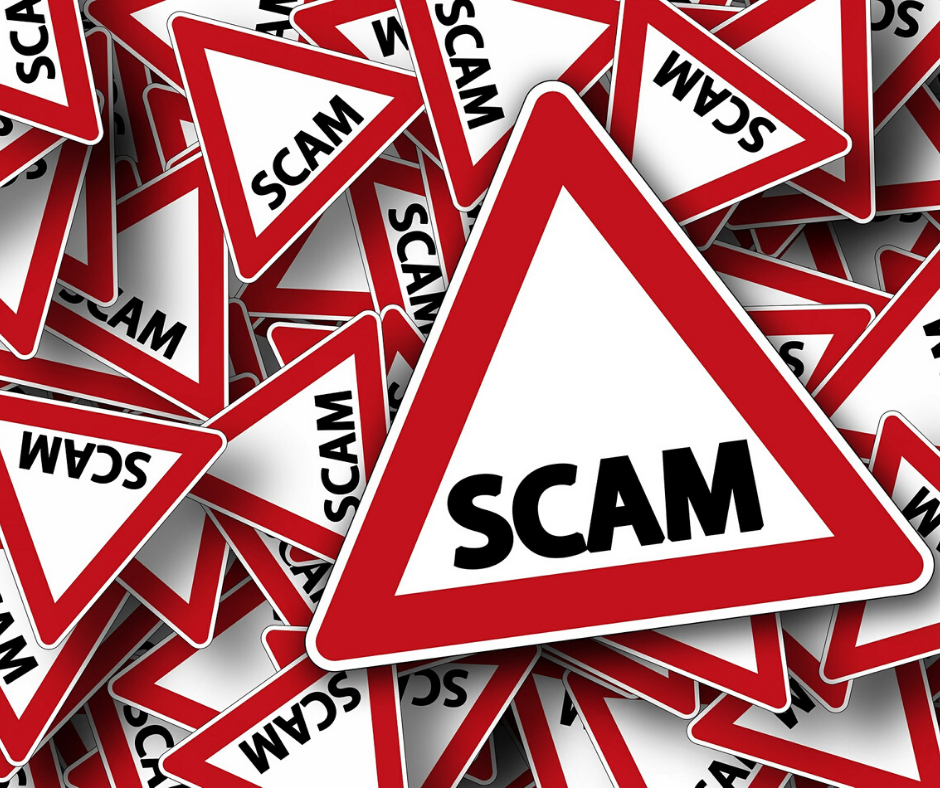Blog


Tuesday
25
FEBRUARY
2020
Is this a Scam? Know the Red Flags.

From spam emails to fake government workers asking for personal information on the phone, scams are all around us. Some are more obvious than others, but do you know how to protect yourself from the sneakier ones?
Here are some warning signs for both online and offline scams:
Wire transfer – Many scams involve a request to wire money electronically using a money transfer service like MoneyGram and Western Union or using cryptocurrency such as Bitcoin. Remember that sending a transfer through these services is like sending cash – once the amount is picked up, it’s almost impossible to get your money back.
Unsolicited friend request on social media – Don’t accept friend requests from people you don’t know. Does their profile look fairly empty or have posts that are very generic? Do they seem to be promising more than friendship? These are red flags that point to a scam. Delete that request. Check your privacy settings to ensure your profile is protected.
Spelling mistakes – Be skeptical or emails, messages or websites that contain misspelled common words, grammar errors that make it difficult to read or expressions that are used incorrectly. Email and web addresses should also be examined closely to see if there are subtle mistakes or differences.
It's just too good to be true – Everybody loves a great deal. But shocking offers, unbelievable discounts and unreal rates may signal that the offer isn’t quite what it seems. Ridiculously low prices usually equal cheap products or counterfeit goods. Free offers may require providing your credit card for shipping. Small tactics like these can lead to big profits for scammers.
Unsolicited calls – You might get a call from someone claiming that you have a virus on your computer or that you owe taxes or there has been fraudulent activity in your bank accounts. Know that legitimate organizations will most likely not call you directly. Don’t take any chances. Hang up and call the organization yourself using the number from a trustworthy source, such as the phone book, their website or even invoices and account statements.
10 Additional Tips to Protect Yourself:
- Regularly check your credit card statements for frequent or unknown charges.
- Never provide your personal information over the phone, via text message, email or the internet.
- Create strong and unique passwords for each of your online accounts. Password-protect your devices and home Wi-Fi network.
- Use a secure and reputable payment service when buying online – look for a URL starting with “https” and a closed padlock symbol.
- Always shield your PIN when using your card. If you hand it over to a cashier, never lose sight of it.
- Shred and destroy documents with personal information.
- Limit the details you share publicly. Fraudsters use information that’s available online and on social media to find potential victims and to time their fraud.
- Don’t reply to spam messages, even to unsubscribe, and don’t open any attachments or follow any links.
- To verify a hyperlink without clicking, hover your mouse over it. Carefully check if it is accurate.
- Delete suspicious messages as they can carry viruses.
If you suspect or know that you are a victim of identity theft or fraud, or if you unwittingly provided personal or financial information, make sure to contact the appropriate authorities right away.
Find more information at www.competitionbureau.gc.ca/fraud
Source: www.newscanada.com